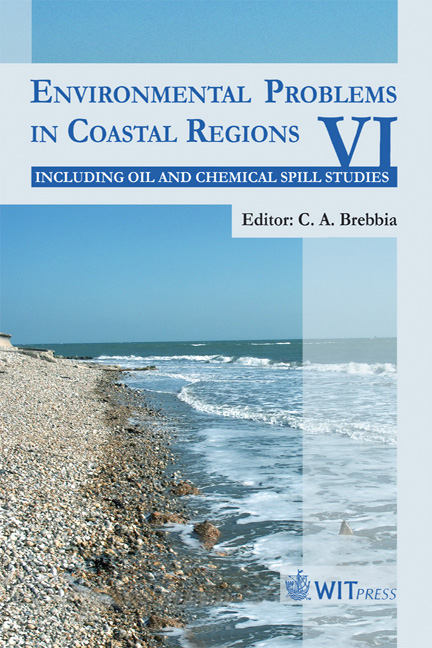Vegetation - Soils Relationships In A Wetland Area Of The Orinoco Delta Plain (Venezuela)
Price
Free (open access)
Transaction
Volume
88
Pages
10
Published
2006
Size
1,006 kb
Paper DOI
10.2495/CENV060301
Copyright
WIT Press
Author(s)
T. Vegas-Vilarrúbia, P. López, F. Baritto, G. Meleán, M. E. Ponce & O. Gómez
Abstract
The Orinoco Delta is one of the world’s last great river deltas with pristine ecosystems. But it is also an important oil and gas reservoir area. Currently, little scientific and factual knowledge is available to assess the effect of oil exploitation activities. Understanding vegetation and soils relationships is fundamental to delineate conservation strategies to maintain species richness, essential ecological processes and life support systems. To meet these needs, our research objectives were to characterize soil conditions supporting different vegetation units of the Lower Orinoco Plain and to relate soil characteristics with vegetation assemblages. For these purposes, surface and bottom soil samples were taken in 227 sites, which were distributed proportionally to each vegetation unit coverage. Samples were analysed for salinity, chlorides, carbonates, pH, organic carbon, exchangeable acidity, aluminium, hydrogen, calcium, potassium and sodium. Average thickness of the surface organic layer was 2.32 m, reaching 6 m in some places. Organic carbon content did not differ significantly among soils from different vegetation units. Lowest surface pH values were found in forests and meadows (< 4.5). Bottom pH was less variable and almost neutral. The highest salinity values were found in mangrove soils (1.80‰ ± 0.12), the lowest in palm forests (0.06‰ ± 0.02). Main differences among soil samples were related with cation exchange capacity (68.3 meq/100g ± 81.5), percent base saturation (91.9% ± 11.0), and acidity (2.30 meq/100g ± 3.46). Our results indicated that content of salts and cations and soil acidification were the main factors in determining vegetation arrangements. Keywords: soil acidity, organic matter, salinity, cation exchange capacity, mangroves, swamp forests, meadows.
Keywords
soil acidity, organic matter, salinity, cation exchange capacity, mangroves, swamp forests, meadows.





